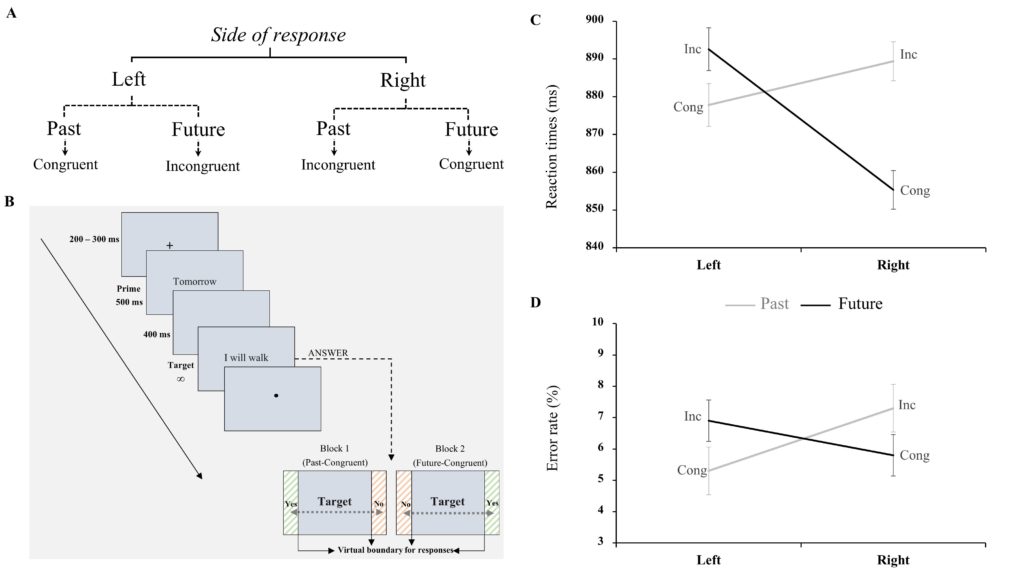
(A) Basic design for “yes” responses (words). Word position and contingency with mental line are manipulated. (B) Task design. A prime (“yesterday” or “tomorrow”) was followed by a real target word or pseudo-word; lexical decisions were made after the onset of the target by moving a pen on the trackpad towards the left or right. (C) Mean reaction times and mean error rates (D) as a function of response side (left vs. right) and verb tense (past vs. future). Inc: Incongruent, Cong: Congruent. Mean errors were normalized for tense for the graphical representation of the congruency effect. Error bars indicate within-participant standard errors.
It has been argued that time activates spatial representations organized on a left-to-right axis, a mental timeline, where past events would be to the left and future events to the right. If words that refer to past and future events are represented on the same left-to-right mental timeline, then the processing of such words should interfere with hand movements that go in the opposite direction (e.g., leftwards for future words). The data showed that space-time incongruency slowed down movements (i.e., reaction times) and significantly increased error rates. These results suggest automatic activation of a left-right mental timeline during word recognition, reinforcing the claim that abstract words related to time are grounded in movement through space.
